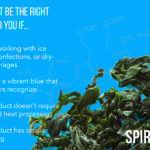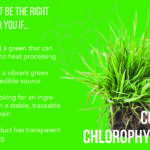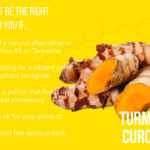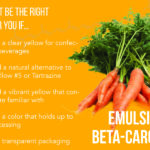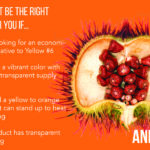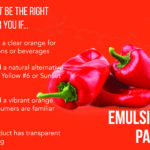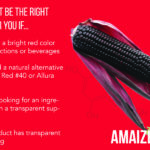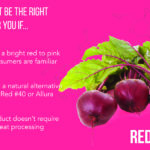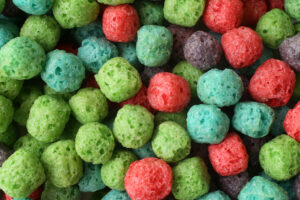There are hundreds of different types of natural colors from dozens of different sources and figuring out how to choose the right natural color for your product can seem daunting. So, we’ve broken down the key factors to help you choose the right natural color option for your application. Need a quick overview? Check out the infographic here.
Heat
If your product undergoes heat treatment, like HTST, pasteurization, baking, or extrusion, you’ll want to choose a heat stable natural color. Fortunately, many natural colors can withstand some heat. These include anthocyanins, carmine, beta-carotene, annatto, turmeric, copper chlorophyll[in], and carbon black, as well as caramel colors, Naturbrown® ingredients, and burnt sugars.
The natural colors that notoriously fade with heat are beet and spirulina. In the case of beet, overdosing (or adding more color than you need up front), may be enough to compensate for some fade, but in general, you’ll want to avoid both of them.
Light
Just like with heat, some natural colors perform better with light exposure than others. If your packaging is clear or has a window, avoid turmeric and opt for beta-carotene, for example. Another natural color that doesn’t like light is spirulina.
If you are making a blue product, since this hue has limited options, you may want to use opaque packaging or eliminate the window to protect the integrity of the color.
pH
Anthocyanins, like Amaize® red, purple carrot, and elderberry, are pH sensitive colors. This means the hue will shift depending on the pH of the application they are in. So, if you are working with a beverage or a confection at a low pH it will appear red, but if you try to use it at a higher pH, it will turn purple-y blue. If you want to aheive a red hue at a higher pH, opt for non-anthocyanin sources like carmine or beet.
The other color that is sensitive to pH is spirulina (yes, again). It performs best between pH 4 and 7 and will precipitate out of solution if used outside these parameters.
Most other natural colors are fairly stable to a wider pH range but very few will work in a pH under 2, like for soda concentrates.
Check out the guides below to find out which natural color might be the right starting point for your product:
Salt
Most savory applications have 5% salt or less, so many natural colors can be used. But others, like soy sauce, contain up to 20% salt. To avoid precipitation/haze in high salt applications, be sure to use caramels specifically developed for salt stability. Natural colors will not work for applications like soy sauce.
Storage
Ambient? Refrigerated? Frozen? Certain storage conditions can cause fading while others prevent it. For ambient storage, go for robust colors like caramel, annatto, and beta-carotene.
Refrigerated or frozen products, like ice creams, and ready meals on the other hand, are great for preserving the vibrancy of natural colors, allowing for just about any natural color to be used.
Ingredient Interactions
The natural colors you have to be most careful with in terms of ingredient interactions are natural color emulsions. If your product contains an emulsifier, be sure to check that the emulsifier used in the natural color formulation is compatible with the other ingredients that make up your formulation. Otherwise, you may end up with a broken emulsion.
Other ingredients to be aware of are vitamins and minerals, which can cause natural colors to fade in the final product.
Flavor
Your flavor will also help guide what natural color to choose. For example, If you are going for a lemon flavor, turmeric and safflower are generally your best yellows for the job because they can provide very bright, almost neon yellow colors. But if you are going for a pineapple or mango flavor, beta-carotene or annatto may be better options because they can provide more golden or orange-y yellows that consumers more closely associate with these flavors.
It’s important to note that many manufacturers need blends to achieve the right color for their flavor. Not only does this help create more options to get the shade just right, but it also allows for differentiation, so no two flavors look the same.
Country
Every country has regulatory requirements so it important to know where you will be selling your product as this can impact natural color selection. For example, safflower is a great bright yellow option for confections in the EU, but it is not permitted as a color in the US and you’ll have to go for turmeric instead.
Greens and blacks are also difficult to create on a global scale. Chlorophylls are widely used in the EU and Latam but are not permitted in the US outside of dry mix beverages. Similarly, carbon black is permitted in Canada, the EU, and certain Latin American countries but not the US and other Latin American countries. Be sure to check the regulations for your specific region before picking out your color.
As you can see, figuring out how to choose the right natural color for your application can be difficult, but when you get the right color, your application will go unrivaled! Want some help? Contact us with your questions.

